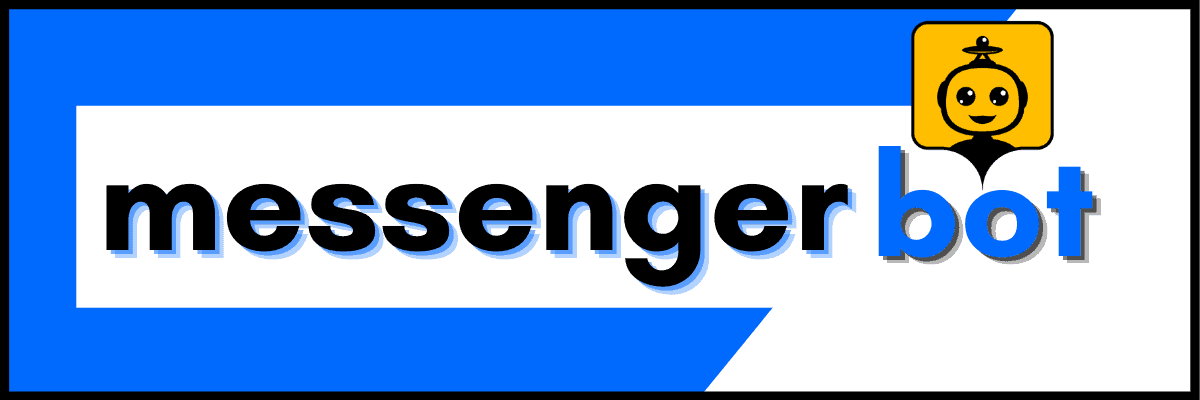HubSpot et Asana sont deux plateformes populaires d'automatisation marketing qui peuvent vous aider à améliorer vos taux de conversion. Elles offrent toutes deux de nombreuses fonctionnalités similaires, y compris le marketing par e-mail, le suivi des leads, les rapports d'analyse, les outils de gestion des réseaux sociaux, et plus encore. Laquelle est la meilleure pour vous ? Cela peut dépendre du type d'entreprise que vous avez ou de votre expérience avec la technologie. Dans cet article de blog, nous examinerons certains avantages et inconvénients de chaque plateforme afin que vous puissiez décider laquelle est la mieux adaptée à votre entreprise !

Qu'est-ce qu'un CRM ?
CRM signifie gestion de la relation client. C'est un moyen de suivre toutes vos interactions avec les clients, les leads et les prospects en un seul endroit afin que vous puissiez analyser les données à travers les points de contact au fil du temps.
Le CRM permet aux marketeurs d'organiser leurs contacts par entreprise ou par personne, de gérer des campagnes par e-mail et d'automatiser des processus marketing comme le scoring des leads (pour mesurer la probabilité qu'une personne devienne un client).
Le CRM fournit également des données pour informer votre stratégie marketing, telles que le nombre de leads générés sur une page de destination ou combien de fois une personne a consulté un e-mail.
Pourquoi avez-vous besoin d'un CRM ?
Le CRM fournit un moyen de suivre toutes vos interactions avec les prospects et les clients, afin que vous puissiez analyser les données à travers les points de contact au fil du temps. Le CRM fournit également des données pour informer votre stratégie marketing, comme le nombre de leads générés sur une page de destination ou la fréquence à laquelle une personne a consulté un e-mail.
Un CRM n'est pas nécessaire pour chaque entreprise, mais il permet aux marketeurs d'organiser leurs contacts par entreprise ou par personne, de gérer des campagnes par e-mail et d'automatiser des processus marketing.
Comment un CRM peut-il vous aider, vous et votre marque ?
Le CRM peut vous aider, vous et votre marque, en veillant à ce que chaque client soit traité avec respect.
Un CRM peut également aider à gérer les leads, les campagnes, les clients, à partager des informations sur les leads, etc.
Pour qu'un CRM soit efficace, il a besoin des bons outils. Voici les trois fonctionnalités clés que vous devez rechercher lors du choix de votre outil. Tout d'abord, l'outil doit être capable de gérer les leads. Deuxièmement, il doit avoir la capacité de partager des informations avec les membres de l'équipe. Enfin, recherchez une plateforme qui a la capacité de gérer efficacement les campagnes et les événements.
Le CRM est important pour toutes les entreprises, quelle que soit leur taille. Cependant, les grandes entreprises en bénéficient le plus car elles ont beaucoup plus à gérer et à suivre que les petites ou moyennes entreprises (PME). Si votre entreprise fait partie des 90 % qui n'utilisent pas le CRM comme partie de leur stratégie marketing, il est temps de faire le changement.

À propos d'Asana
Asana est un logiciel basé sur le web qui vous aide à organiser vos tâches en projets, à coordonner avec les membres de l'équipe et à suivre les progrès.
Asana est parfaitement adapté aux petites et moyennes entreprises ainsi qu'aux freelances car il se concentre sur vos projets.
Asana offre plus de fonctionnalités à un coût inférieur, sans limiter le nombre d'utilisateurs ou d'intégrations.
Asana vous permet de créer des tâches et de les assigner avec des délais.
La capacité unique pour les utilisateurs de voir la vue d'ensemble à travers les projets facilite le suivi de ce qui est le plus important.

À propos de HubSpot
HubSpot est une plateforme de marketing et de vente qui aide les entreprises à se connecter avec leurs clients.
C'est bien plus que de simples outils d'e-mail ! Dans HubSpot, vous pouvez accéder au CRM, à la gestion des réseaux sociaux, au logiciel de suivi des leads, aux plateformes de blogging – même des fonctionnalités de gestion de projet pour que les membres de l'équipe travaillent ensemble en temps réel. Cela signifie pas de changement d'un outil à un autre, ce qui peut être chronophage et coûteux.
HubSpot s'intègre à votre site web pour fournir des données analytiques précises que vous pouvez utiliser à des fins marketing – et tout est au même endroit ! Les équipes marketing adorent cela car elles n'ont plus besoin de s'appuyer sur plusieurs outils ou flux de travail pour exécuter leurs stratégies. Elles voient tout se rassembler à travers la plateforme HubSpot.
Comparaison des fonctionnalités Asana vs HubSpot
Dans cet article de blog, nous vous montrerons lequel est le meilleur pour l'automatisation marketing et le CRM : Asana ou HubSpot. Nous comparerons leurs fonctionnalités dans une comparaison directe afin qu'il soit plus facile pour vous de choisir le meilleur outil en fonction des besoins de votre entreprise.

Facilidad de uso
La facilité d'utilisation est un facteur très important en marketing. Ce n'est pas seulement pour l'utilisateur, mais aussi parce que cela permet aux marketeurs d'automatiser plus rapidement et efficacement. Une façon d'améliorer la facilité d'utilisation est d'inclure des flux de travail qui vous permettent de configurer des tâches automatisées sans avoir à coder quoi que ce soit.
Les marketeurs qui s'intéressent aux systèmes CRM souhaitent un système facile à utiliser qui leur permet de gérer leurs flux de travail sans avoir à dépendre de l'informatique.
La facilité d'utilisation d'Asana n'est pas à la hauteur de celle de HubSpot, mais Asana est beaucoup plus facile à utiliser que d'autres CRM.
HubSpot vous permet de créer des flux de travail automatisés sans avoir de connaissances en code ou en développement, tandis qu'Asana nécessite certaines connaissances en codage. Avec HubSpot, les marketeurs peuvent également mieux gérer leurs pipelines et créer des prévisions de ventes plus précises.
Marketers who are not tech-savvy, marketers looking for a CRM that isn’t going to cost them an arm and a leg, or someone with limited resources will benefit from Hubspot’s Ease of Use.
Asana might be better for marketers who are tech-savvy and know how to code.
If you need an easy way to automate your marketing efforts, Hubspot is definitely worth looking into over Asana because it will make things much easier on you down the road. Alternatively, if coding isn’t something that scares or intimidates you, Asana might be a better choice.
Hubspot and Asana both offer ease of use, but HubSpot’s Ease of Use is much more beneficial in terms of marketing automation. Additionally, marketers who need an easy way to manage their pipelines without having to rely on IT will benefit from HubSpot’s ease of use.
In terms of ease of use, HubSpot is by far the better option of the two. Not only will it make things easier for marketers who don’t know how to code, but also for those without a large budget or resources since HubSpot doesn’t require any coding knowledge.
Asana has shown that they can improve their ease of use and some aspects are more effective than HubSpot, but for marketers who need a way to automate without having to rely on IT, Hubspot is the better option.

Reporting
Reporting refers to providing data that is used by a company or organization in order to determine certain aspects of the business. This information may be used for tracking sales and marketing efforts, as well as monitoring employees’ productivity. While both Asana and HubSpot offer reporting features, each has different capabilities which make them more or less beneficial depending on your individual needs.
Reporting is most valuable when it is done automatically so that you can easily track progress and goals.
Asana’s reporting feature is a bit limited compared to HubSpot. It only provides information on the number of tasks completed, versus HubSpot’s ability to provide reports that include whether or not a task is completed. Asana does allow users to set up personal goals and track their efforts towards those targets; however, this feature is limited in how it can be used by business owners since its capabilities are based upon individual performance rather than company goals.
HubSpot includes reporting features like lead scoring, which allows marketers to keep track of what kinds of leads are converting the best and how many sales they’ve made through their marketing efforts; campaign summaries; and email performance reports for each person on your team who manages emails within HubSpot. This tool also has an extensive API that can be used with other programs in order to provide even more detailed information.
Hubspot has several built-in reports that allow you to check your progress. These reports can be set up and monitored automatically, which makes it easy for marketers to track their effectiveness and how they are performing against goals without having to manually compile the information themselves.
HubSpot and Asana have many of the same reporting capabilities, such as task management, email automation, contact lists built directly into their platforms rather than using a separate program like Gmail or Outlook; reports on how much effort people put into projects; and pre-built templates that allow companies to set up common tasks like email campaigns in order to save time.
While both HubSpot and Asana offer many of the same kinds of reporting, there is a significant difference in how detailed these reports can be depending on which tool you use. For example, HubSpot’s more advanced reporting features include lead scoring and email performance reports which help you track how effective your efforts are at acquiring new customers or sales. Asana only has a limited number of built-in reports that focus on individual goals rather than company goals.
In terms of reporting, HubSpot is better for those who want to monitor and track their progress against company goals. Asana may be a good option if you are seeking more detailed individual reports that can help you create personal action plans in order to reach specific targets; however, HubSpot’s reporting capabilities allow marketers to keep an eye on how they’re performing as individuals versus the company as a whole.

Sales Automation
Sales automation is the process of using software and technology to automate, simplify and maximize sales processes. This includes lead management, marketing automation (MA), customer relationship management (CRM) – including social CRM – project management and reporting tools.
Sales automation is important for both sales and marketing because it streamlines workflows between these two teams by reducing manual tasks and allowing for better collaboration. It also helps both teams to achieve their goals by providing a platform through which they can work together more efficiently, with sales automation tools making it possible to measure marketing’s contribution to pipeline generation in real-time.
Asana’s sales automation gives businesses the power to streamline workflows and prioritize tasks. It unifies communication channels, making it easier for teams to collaborate on projects regardless of location or time zone. Asana also allows companies to track and report progress over time – giving management insight into how their team is performing against goals and enabling employees at all levels with greater visibility across an organization.
Asana’s sales automation tool doesn’t include a CRM – it requires users to connect an external CRM platform, such as HubSpot or Marketo if they want the ability to track pipeline data and email marketing campaigns in real-time. This lack of built-in integrations can make Asana less attractive for businesses that want to standardize on a single platform for sales automation and marketing (a popular option among companies looking to streamline their marketing efforts).
HubSpot’s sales automation tool allows businesses to manage the entire sales process from lead generation through close via an intuitive, easy-to-use interface. This includes all of HubSpot’s other features, including email marketing, landing pages and forms, web tracking analytics, and reporting. HubSpot also offers built-in integrations with Marketo for lead nurturing campaigns, as well as Salesforce to allow sales teams to manage deals in one system alongside all of their other data points (including contacts).
In terms of sales automation, Asana excels at streamlining workflow and prioritization but lacks the built-in integrations HubSpot offers. HubSpot’s sales automation is a better option for businesses looking to standardize on a single platform that covers both marketing and sales needs in addition to its CRM capabilities.

Mobile App
A mobile app is an application that is installed on mobile devices, such as smartphones or tablets. It allows users to access the information of a particular service of business anytime and anywhere instead of being limited to using it by sitting in front of the computer.
A mobile app allows your customers/users to instantly engage with your brand. Mobile Apps provide customers with features that are easy to access, download and use on the go.
A mobile app is important for marketing because it allows you to stay connected with your customers 24/24. You can keep track of what is happening and where they are interacting the most with your brand, which will allow you to be as effective as possible.
Asana’s mobile app is very simple and it doesn’t provide a lot of options because it doesn’t give you the chance to create, update and analyze content within the app itself.
HubSpot’s mobile app is more complex but provides you with all the necessary features in order to effectively manage your work from anywhere. It also offers additional functionalities that will help you connect better with your customers/clients, which puts HubSpot above Asana. Aside from that, HubSpot’s app is completely free.
HubSpot offers everything that a marketing team needs in order to manage their work effectively and they provide it through an easy-to-use mobile app with plenty of options, so HubSpot deserves the crown! Asana’s only advantage is that it’s free but you can’t really do anything with the app itself.
In terms of a mobile app, Asana and HubSpot are very different. Asana has a basic, free app with limited features whereas HubSpot provides everything you need through an easy-to-use mobile app that comes at no cost. At the end of the day, as long as your marketing team is able to work effectively from anywhere then any mobile app will suffice but since HubSpot provides more features and is completely free, it’s the clear winner.

App Integrations
App integrations are software that can be plugged into other applications, allowing them to share data with each other. It is important to have app integrations in marketing automation software because it allows your different apps to work with each other.
Having various applications integrated makes sharing data easy and streamlined, so you don’t need multiple logins or email accounts for everything. It saves time but also can help improve the work you do. For example, if one app has a feature that another doesn’t (or vice versa), integrating them can help with this problem!
Integrated apps also help in marketing automation by allowing certain forms to be connected and integrated into your CRM for easy lead generation. You can upload data from multiple sources to your CRM, so you have one place for all of your contacts. This way it is easier to stay organized and find the right information when you need it.
Asana’s app integrations are Slack, Dropbox, Google Drive, and others. HubSpot’s app integrations are Zendesk, Pipedrive, Box & more.
The app integrations of Asana and HubSpot are similar.
Hubspot has more app integrations, but they can be a bit outdated compared to Asana’s integration options. Both have various apps that make marketing automation and CRM easier!
Asana’s app integrations do not allow you to connect directly to your CRM.
Hubspot’s app integrations are more new, but they can be fairly limited in what information is shared between apps. Both Asana and HubSpot make it easy to share data with multiple sources of contact information!
Asana’s app integration options let you share data with multiple sources of contact information! You can upload leads or client info straight into your CRM without needing to switch between apps. This saves time but also ensures that all the important information is always in one place for easy access.
Hubspot’s app integrations are more new, but they can be fairly limited in what information is shared between apps. Asana and Hubspot make it easy to share data with multiple sources of contact information! You can upload leads or client info straight into your CRM without needing to switch between apps. This saves time but also ensures that all the important information is always in one place for easy access!
In terms of app integrations, Asana and HubSpot are both great options. Asana’s integration option allows you to upload data from multiple sources into your CRM, so it is easy for you to stay organized! It also makes life easier as a marketer because sharing contact information with different apps can be very time-consuming.
Hubspot has more app integrations than Asana, but they can be a bit outdated compared to Asana’s integration options. Both have various apps that make marketing automation and CRM easier!
In terms of app integrations, both Asana and HubSpot are great for marketers because it saves time from switching between multiple sources of information while also ensuring you have all the important data in one place.
Asana and HubSpot both make it easy to share data with multiple sources of contact information! You can upload leads or client info straight into your CRM without needing to switch between apps. This saves time but also ensures that all the important information is always in one place for easy access!

User Support
User support is an important aspect of any marketing platform because it is the support that helps users to understand how a product works and what they can do with their purchase. Good user support means a happy customer who will be satisfied with your software and won’t complain about bugs or other mistakes which you wouldn’t know without proper testing anyway.
If you are a small business, you won’t be able to hire many support agents and build a whole department within your company. This is where marketing automation for small businesses comes in handy – it provides the best user support out of all CRM software solutions by allowing users to find answers themselves.
And if there is no answer that satisfies them they can contact support agents who are able to answer any question, no matter how complex it is.
Asana’s user support is not as good, because it is slow and doesn’t provide instant help as HubSpot does. This means that most of the users will try to find solutions themselves or contact your support team directly for more specific information which they won’t be able to get via Asana’s platform only.
HubSpot provides instant answers on their website and a live chat option to users who need more information about how your marketing platform works. This allows them to find the solution fast and get back on track with their work without contacting customer support directly or trying to figure out everything by themselves.
If you are a business owner, HubSpot provides an opportunity to build a customer support department for your business without hiring agents. You can add it to their monthly package or get the CRM only which includes all features of HubSpot’s Marketing platform and will allow you to easily monitor how effective is your marketing, who interacts with your website, and what kind of content they prefer most.
Asana doesn’t provide a similar opportunity, which means that you will have to hire an agent yourself if your business needs more support than just emailing back and forth.
HubSpot is the best option for small businesses looking for marketing automation but still want to provide great customer support. It’s also perfect for bigger companies who need all features of CRM software combined with a marketing platform.
Asana is not as good if you are looking for customer support only, but it’s the best option for businesses who want to have a whole team of agents they can delegate tasks to and better manage their time on social media platforms.
In terms of user support, Asana is not the best choice for marketing automation because it provides slow and unreliable user support, especially in comparison to HubSpot.
HubSpot allows users to find answers themselves if there are no agents available online, which means that your business won’t have to provide a whole department of customer service employees or spend extra money on hiring them yourself.
Asana doesn’t have the same feature which is why it’s not as good for customer support.

Tarification
Pricing is the process of setting a price for goods, services or intangible items.
Pricing is important in marketing because it can directly impact sales volume and revenue by setting prices to reflect market conditions (the cost of producing the product) as well as establishing an appropriate level of profitability.
Remember that pricing strategies should be related to the target market and your marketing goals.
Asana has three pricing plans that range from $50/month to $150/month. These plans can be used to track and manage asana projects.
HubSpot has four different pricing packages that range from $200/month to $800/month, each with a unique set of features designed for specific business sizes and needs. Hubspot’s higher-end offerings also include additional services like training and customer support.
HubSpot has four different price ranges based on the features you need, starting at free for beginners and up to over a thousand dollars per user with all of their advanced tools. This gives users the flexibility to choose what is best for them within an appropriate budget.
Asana has three different price ranges, but they are a bit more costly in comparison.
In terms of pricing, HubSpot is more flexible for businesses of different sizes and budgets. Asana’s pricing plans are a bit too expensive for the average business, so it may be better to go with Hubspot instead.
Asana has three different price ranges based on features you need: $50/month, $150/month, or $300/month. HubSpot has four different price ranges based on features you need: free, $200/month, $800/month, or custom.
Hubspot is more flexible for businesses of different sizes and budgets. Asana’s pricing plans are a bit too expensive for the average business, so it may be better to go with Hubspot instead.

Modèles
Templates are important for marketing because they allow marketers to maintain the same look and feel in their email, social media posts, landing pages, etc. This consistency builds trust with your audience by making you more recognizable.
Templates also help keep things organized in CRMs like HubSpot or Asana when content is reused.
Asana’s templates are more limited than HubSpot’s. Asana has five templates, while HubSpot gives you access to 40+ templates. Aside from that, Asana’s templates are more customizable. You can’t move fields around or add your own, but you have to option to change the color and font of Asana’s template text boxes from a selection of six colors and four fonts.
HubSpot also lets you add a pre-header to your email, while Asana does not. A pre-header is the line of text at the top of an email that usually has the subject and sender information about who sent it, which gives users more context when they first look at their inboxes.
HubSpot comes out on top when it comes to templates because of its large selection and ease of use. It also offers a wider range of integrations with popular email marketing and CRM tools.
In terms of templates, HubSpot is the better option for marketing automation and CRM. It offers a much larger selection and more user-friendly templates than Asana does.

Customization Capabilities
Customization capabilities are the ability to add new fields, edit existing ones and delete/add on reports that are available. The customization capabilities of HubSpot make it very easy for users to collect data through forms (namely landing pages) then analyze all the info in one place which allows you to see your sales funnel at a glance. It is important because you can see how your salespeople are performing which gives them the opportunity to improve their work.
Customization capabilities are important because they help marketers analyze their leads/prospects better by knowing what is the best way to engage them. It also gives marketers insight into their sales process which can help improve it in the long run.
Asana’s customization capabilities are not as advanced. It’s very limited to the number of fields that can be added and it doesn’t allow you to see your sales funnel at a glance as HubSpot does.
Hubspot’s customization capabilities are advanced and it’s very easy to add new fields, edit existing ones and delete/add on reports that are available. Aside from that, you can see your sales funnel at a glance which gives you the opportunity to improve your work.
In terms of customization capabilities, Asana is not as advanced. It’s very limited to the number of fields that can be added and it doesn’t allow you to see your sales funnel at a glance like HubSpot does which gives marketers more insight into their lead/prospects, helps improve their work in the long run.

Project Management
Project Management is the discipline of getting things done. It’s about how to create, plan and manage your project across all departments that are involved in it (e.g., marketing). While many companies embrace agile methodology for their development projects, they often overlook its potential use throughout the company as a whole.
Unlike traditional approaches, an agile team does not plan projects as a series of sequential tasks with owners and deadlines. Instead, they work in “sprints” where the entire team works on one project at a time for defined periods of time (e.g., 30 days). This helps to break down large-scale initiatives into smaller pieces that can be completed over shorter periods and allow teams to adjust to changing priorities.
Asana’s project management is built around three central features: boards, tasks, and conversations. You can create a board for each project or initiative that you’re working on (e.g., Marketing). Each task should be an actionable work item assigned to an individual person (or organization that will change status as it progresses through the process flow of your workflow (e.g., In progress, On hold, Completed)) – who can then assign themselves tasks.
Asana’s project management also includes a Task view and Calendar view which you can use to keep track of the progress on your board. You’ll be able to see who has assigned themselves tasks, what is in progress at any given time, and when deadlines are approaching (with Asana’s Timeline View).
HubSpot doesn’t have a native project management tool, but it does integrate with Asana. HubSpot customers can link their existing Asana boards and tasks to their projects inside of HubSpot – or create new ones from within the platform.
Hubspot is primarily built around marketing automation tools which include email marketing, lead generation, social media publishing/monitoring as well as landing pages and forms. It also includes a CRM tool, Sales email templates & reporting as well as call tracking. In this way, HubSpot is more of a marketing platform than just project management or an all-in-one solution like Asana which has many other features that you can use to enhance your company’s workflow processes.
HubSpot’s project management is all about the team, not individual tasks. That means that they don’t have an option to assign a task directly to someone (every action item needs to be assigned to either “the project” or every member of your company). HubSpot doesn’t offer boards in their Free plan and only provides you with a single bucket called “Inbox” which is your to-do list.
In terms of project management, both Asana and HubSpot can help your marketing team to collaborate more closely. However, HubSpot’s project management is built around the idea of a project manager which you may not have in your company whereas Asana was designed to work for distributed teams who don’t necessarily know each other well or are scattered across various timezones.
This makes Asana better for marketing automation and CRM.
Qui ne devrait pas utiliser Salesforce et HubSpot CRM ?
Qui ne devrait pas utiliser HubSpot CRM
Les entreprises qui ne devraient pas utiliser HubSpot CRM sont celles qui ont un budget limité pour l'automatisation du marketing et le CRM. Le CRM HubSpot est trop coûteux pour ces types d'entreprises pour même envisager d'utiliser la plateforme.
Qui ne devrait pas utiliser Salesforce
Les entreprises qui ne devraient pas utiliser Salesforce CRM sont celles qui n'ont pas beaucoup d'employés. Le CRM Salesforce est trop coûteux pour ces types d'entreprises pour même envisager d'utiliser la plateforme.
Questions fréquemment posées

Qu'est-ce que les workflows HubSpot ?
Les workflows HubSpot vous permettent d'automatiser les processus de marketing et de vente.
Vous pourrez créer des workflows spécifiques pour différentes équipes, ce qui inclut de les nommer en conséquence afin que les membres de l'équipe comprennent exactement pourquoi ils reçoivent certains e-mails ou tâches dans leur boîte de réception.
Lorsque les notifications push sont activées, les membres des workflows recevront des alertes mobiles lorsque de nouvelles tâches ou e-mails arrivent dans leur boîte de réception.
Cela permet de rationaliser et de maintenir une communication d'équipe cohérente dans toute votre entreprise.
Quel est le meilleur pour mobile et en déplacement ?
La meilleure plateforme pour mobile et en déplacement est définitivement Asana.
HubSpot n'offre pas d'application pour les utilisateurs mobiles et en déplacement comme le fait Asana, ce qui est un énorme inconvénient si vous êtes quelqu'un qui doit pouvoir mettre à jour rapidement votre équipe d'où que vous soyez à tout moment. De plus, l'interface utilisateur de HubSpot n'est pas du tout adaptée aux mobiles.
L'interface utilisateur d'Asana est entièrement compatible avec les mobiles et en déplacement, ce qui la rend parfaite pour les professionnels occupés qui ont besoin de pouvoir consulter leur e-mail professionnel lorsqu'ils sont loin d'un ordinateur ou pendant leurs temps morts au cours de la journée. Vous pouvez également télécharger l'application Asana sur votre téléphone, ce qui est idéal pour les utilisateurs en déplacement qui ont besoin de pouvoir consulter leur e-mail professionnel à tout moment.
HubSpot n'a également pas d'interface adaptée aux mobiles en général, donc vous pouvez oublier la possibilité d'ouvrir votre e-mail professionnel en déplacement.
Quelles sont quelques alternatives ?
Quelques alternatives à HubSpot et Asana sont Marketo, Pardot et Salesforce.
Marketo, Pardot et Salesforce sont tous similaires à Asana en ce sens qu'ils offrent des outils de gestion de projet. Les fonctions principales de HubSpot sont centrées sur l'automatisation du marketing, les campagnes par e-mail, les pages de destination, l'optimisation SEO, les capacités d'intégration des médias sociaux, et des rapports analytiques avec des insights automatisés concernant à la fois la mesure du ROI et les opportunités de génération de leads à travers les plateformes.
Marketo est la seule alternative qui dispose d'une plateforme CRM comme Asana et HubSpot. Salesforce est préféré par ses utilisateurs pour son intégration avec des outils d'automatisation du marketing ainsi que d'autres fonctionnalités telles que le routage des leads, la gestion des campagnes par e-mail et les capacités d'intégration des médias sociaux.
Pardot se concentre sur la gestion des leads à travers des campagnes de nurturing, l'automatisation du marketing par e-mail avec un accent sur le scoring des leads et l'engagement personnalisé.
HubSpot est supérieur à ses concurrents en matière de capacités de gestion de projet ainsi que d'avoir une plateforme CRM similaire à Asana. Marketo a le plus de fonctionnalités par rapport à HubSpot ou Asana mais manque de gestion de projets à travers des tâches tandis que Pardot est davantage axé sur les campagnes de nurturing. HubSpot est généralement le choix le plus populaire pour l'automatisation du marketing et les capacités CRM, ses concurrents étant similaires en fonctionnalités mais moins efficaces en matière de gestion de projets ou de campagnes de nurturing.
Conclusion : HubSpot vs Salesforce
Nous avons examiné les détails de HubSpot et Asana, mais il est temps de voir lequel est le meilleur pour l'automatisation du marketing et le CRM. Bien que les deux outils soient d'excellents choix dans cet espace, nous croyons que HubSpot est le meilleur ; son interface conviviale facilite la configuration des campagnes par e-mail et des règles d'automatisation du marketing, et il dispose d'un plus grand nombre d'intégrations.
Asana est excellent pour les petites entreprises qui ont besoin d'aide pour gérer des projets ; cependant, si vous cherchez à augmenter la productivité de votre équipe d'un cran, HubSpot devrait être le choix à privilégier. Cela dit, Asana peut encore être le meilleur choix selon les besoins de votre entreprise.




